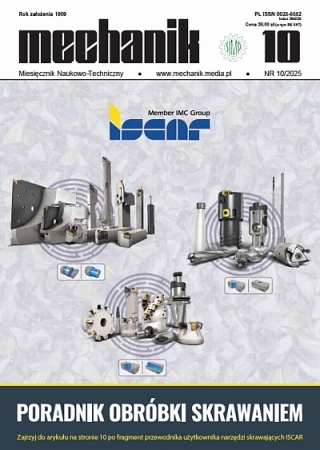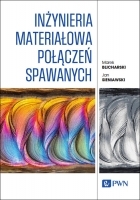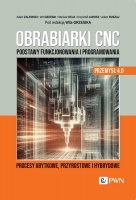Wpływ ostrzenia na efektywność pracy przeciągacza *
The effect of sharpening on efficiency of a pull broach operation
Mechanik nr 10/2016 - X Szkoła Obróbki Skrawaniem, XXXIX Naukowa Szkoła Obróbki Ściernej
STRESZCZENIE: W procesie eksploatacji przeciągacz podlega wielokrotnemu ostrzeniu. Resurs pracy ostrzonego narzędzia stanowi od 75÷85% okresu pracy przeciągacza. W pracy przeprowadzono analizę efektywności pracy przeciągacza w okresie całego cyklu jego pracy. Badania prowadzono przy obróbce stali C45. Na podstawie otrzymanych wyników badań i ich analizy otrzymano zależność matematyczną wpływu liczby ostrzeń prowadzonych na powierzchni natarcia na uśrednioną wielkość zużycia zębów przeciągacza VB.
SŁOWA KLUCZOWE: przeciąganie, zużycie ostrza, rozrzut trwałości, kryterium zużycia, ostrzenie narzędzi
ABSTRACT: In the process of the operation the pull broach is subjected to multiple sharpening. Service life of a sharpened tool is ranged from 75 to 85% of pull broach operation life. In the paper the analysis of efficiency of the pull broach operation in the whole cycle of their operation is presented. The investigations were carried out at machining of C45 steel. The mathematical relationship of the effect of the number of sharpenings conducted on the rake face on the average amount of pull broach tooth wear VB was obtained on the basis of the results of the research and their analysis.
KEYWORDS: pull broaching, blade wear, durability dispersion, wear criterion, tools sharpening
BIBLIOGRAFIA / BIBLIOGRAPHY:
- Kishawy H.A., Hosseini A., Imani B.M., Astakhov V.P. „An energy based analysis of broaching operation: Cutting forces and resultant surface integrity”. CIRP Annals – Manufacturing Technology. Vol. 61, No. 1 (2012): pp. 107÷110.
- Loizou J., Tian W., Robertson J., Camelio J. „Automated wear characterization for broaching tools based on machine vision systems”. Journal of Manufacturing Systems. Vol. 37 (2015): pp. 558÷563.
- Terry W.R., Cutright K.W. „Computer aided design of a broaching process”. Computers & Industrial Engineering. Vol. 11, No. 1÷4 (1986): pp. 576÷580.
- Lauro C.H., Brandao L.C., Baldo D., Reis R.A., Davim J.P. „Monitoring and processing signal applied in machining processes – A review”. Measurement. Vol. 58 (2014): pp. 73÷86.
- Teti R., Jemielniak K., O’Donnell G., Dornfeld D. „Advanced monitoring of machining operations”. CIRP Annals – Manufacturing Technology. Vol. 59, No. 2 (2010): pp. 717÷739.
- Jaworski J., Kluz R., Trzepieciński T. „Operational tests of wear dynamics of drills made of low-alloy high-speed HS2-5-1 steel”. Eksploatacja i Niezawodnosc – Maintenance and Reliability. Vol. 18, No. 2 (2016): pp. 271÷277.
- Zoriktuev V.T., Nikitin Y.A., Sidorov A.S. „Monitoring and prediction of cutting-tool wear”. Russian Engineering Research. Vol. 28, No. 1 (2008): pp. 88÷91.






















